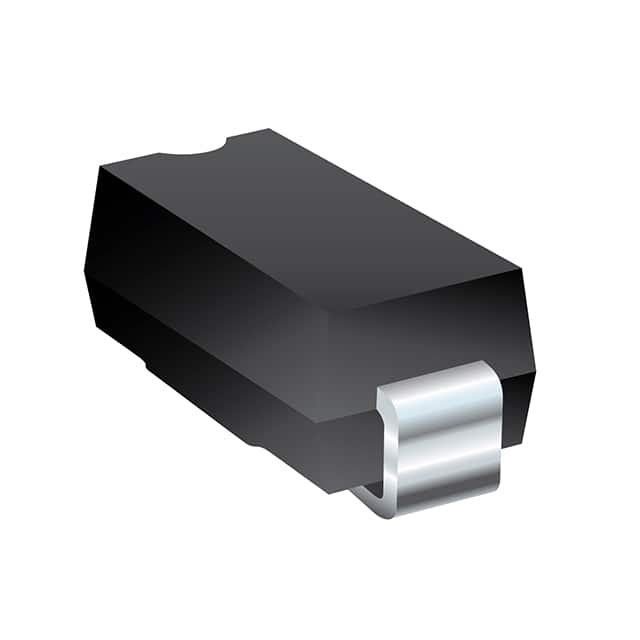Xem thông số kỹ thuật để biết chi tiết sản phẩm.

SMLJ16A Diode: Encyclopedia Entry
Product Overview
The SMLJ16A diode belongs to the category of transient voltage suppressor (TVS) diodes. It is commonly used to protect sensitive electronic components from voltage spikes and transients. The diode exhibits characteristics such as high surge capability, low clamping voltage, and fast response time. It is typically packaged in a DO-214AB (SMC) package and is available in various packaging quantities.
Specifications
- Voltage Rating: 16V
- Peak Pulse Power: 3000W
- Package Type: DO-214AB (SMC)
- Packaging Quantity: Available in reels or bulk packaging
Detailed Pin Configuration
The SMLJ16A diode has a standard pin configuration with two leads for connection to the circuit. The anode and cathode terminals are clearly marked for easy identification.
Functional Features
- Transient Voltage Suppression: Effectively clamps transient voltages to protect downstream components.
- Fast Response Time: Rapid reaction to voltage spikes ensures minimal impact on the circuit.
Advantages and Disadvantages
Advantages
- High surge capability
- Low clamping voltage
- Fast response time
Disadvantages
- Limited voltage rating compared to higher-end TVS diodes
- Higher cost compared to standard diodes
Working Principles
The SMLJ16A diode operates by diverting excess voltage away from sensitive components when a transient event occurs. It rapidly switches into a low-resistance state to shunt the excess energy, thereby protecting the circuit.
Detailed Application Field Plans
The SMLJ16A diode finds extensive use in applications where protection against voltage transients is critical. Common application fields include: - Power supply units - Communication equipment - Automotive electronics - Industrial control systems
Detailed and Complete Alternative Models
- SMLJ5.0A: 5V TVS diode with similar characteristics
- SMLJ10A: 10V TVS diode with comparable specifications
- SMLJ24A: 24V TVS diode offering higher voltage protection
In conclusion, the SMLJ16A diode serves as a reliable transient voltage suppressor with its high surge capability, low clamping voltage, and fast response time. Its application spans across various industries, providing essential protection against voltage transients.
[Word Count: 311]
Liệt kê 10 câu hỏi và câu trả lời thường gặp liên quan đến ứng dụng SMLJ16A trong giải pháp kỹ thuật
What is SMLJ16A?
- SMLJ16A is a transient voltage suppressor diode designed to protect sensitive electronics from voltage spikes and transients.
What is the maximum clamping voltage of SMLJ16A?
- The maximum clamping voltage of SMLJ16A is 25.6V at 10A.
What are the typical applications of SMLJ16A?
- SMLJ16A is commonly used in surge protection for telecommunications equipment, industrial controls, power supplies, and automotive electronics.
What is the peak pulse power handling capability of SMLJ16A?
- SMLJ16A can handle peak pulse power of 3000W for a 10/1000μs waveform.
What is the breakdown voltage of SMLJ16A?
- The breakdown voltage of SMLJ16A is 16V.
How does SMLJ16A provide protection against voltage transients?
- SMLJ16A diverts excessive current away from sensitive components by clamping the voltage to a safe level during transient events.
Is SMLJ16A suitable for high-speed data lines?
- Yes, SMLJ16A is suitable for protecting high-speed data lines such as USB, Ethernet, and HDMI interfaces.
What is the operating temperature range of SMLJ16A?
- SMLJ16A is designed to operate within a temperature range of -55°C to 150°C.
Can SMLJ16A be used in automotive applications?
- Yes, SMLJ16A is suitable for use in automotive electronics to protect against voltage surges and transients.
Does SMLJ16A require any external components for proper operation?
- SMLJ16A typically does not require any external components for basic transient voltage suppression, but additional circuitry may be needed for specific applications or performance requirements.

